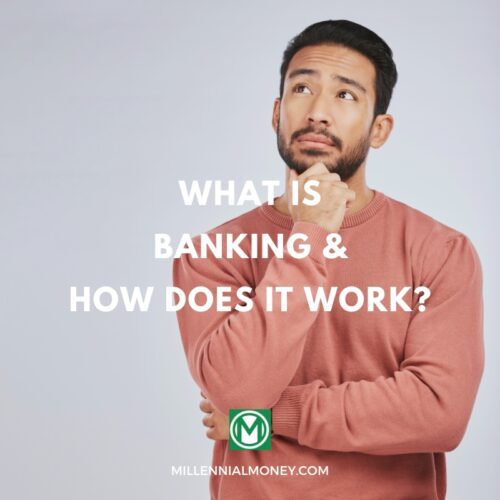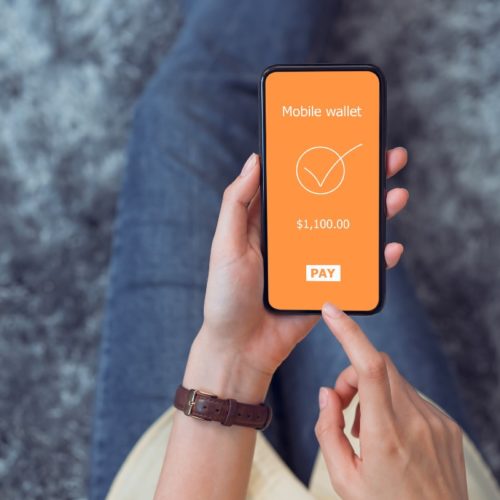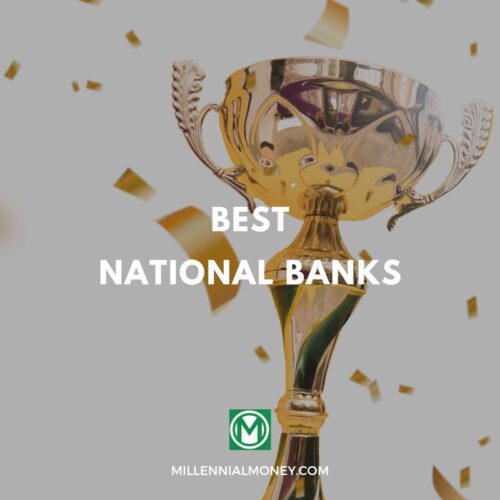Picking a new bank may not seem all that complicated at first glance. However, banks today are more diverse than ever and your choices are nearly endless. So, it’s important to do your research and find one that lines up with your financial goals.
This post explores the different types of banks on the market, as well as some of the features that should be top of mind when shopping for them.
Different Types of Banks to Explore
Here’s an overview of the most common categories of banks on the market.
Retail banks
Retail banks, or traditional banks, are financial institutions that cater to everyday banking consumers. Retail banks are typically brick and mortar banks with physical locations that offer a variety of services like checking accounts and savings accounts, direct deposit, credit cards, and loans. Top retail banks include Bank of America, Chase Bank, TD Bank, and PNC Bank.
Most retail banks are national banks with unexciting interest rates. In other words, these branch locations are better suited for everyday checking transactions (e.g., check deposits or withdrawing cash) rather than stashing money away for the long-term.
In the U.S., all retail banks are insured by the Federal Deposit Insurance Corporation (FDIC), which is an independent agency established by Congress to protect the public financial system. The FDIC provides up to $250,000 in insurance on your deposits.
Learn More:
Online banks
As the name suggests, an online bank is a bank that only serves customers online. In other words, there are typically no physical branches that customers can pop into.
Using an online bank, you can handle most of your basic banking needs, including direct deposit, account transfers, and bill payment.
Since online banks do not have to pay for the high overhead costs that traditional banks do, they are usually able to pass down savings to consumers in the form of lower fees, lower interest rates for loans, and higher interest rates for savings accounts.
The only downside is that online banks can be tricky to use if you need to deposit cash. However, the accessibility can’t be beaten since you can generally access your account and funds 24 hours a day, 7 days a week. What’s more, it’s very easy to open a new account. All you have to do is sign up online and transfer money from another bank account.
Some of the top online banks for 2021 include Ally, CIT Bank, Chime, and Discover Bank.
Learn More:
Credit unions
A credit union is a nonprofit organization that works to protect members rather than score big profits. Credit union deposits up to $250,000 are protected by the National Credit Union Administration (NCUA).
Credit unions — also known as cooperative banks or community banks — are similar to retail banks, in that you can use a credit union to store and access capital. However, in a credit union, its members own the institution.
This is an important distinction to make because there’s a big difference between being a customer and a member-owner. Since credit unions don’t seek to profit from unnecessary fees, they are generally able to offer lower interest loans and higher interest savings plans.
A few of the most popular credit unions include Alliant, Connexus, and Consumers Credit Union.
Can anyone join a credit union?
Unlike banks, credit unions are typically not open to the general public. This means it can be trickier to join one than it would be to enroll at a traditional bank.
For example, you may be able to qualify through an affiliated employer, school, or church. Some credit unions also offer geographic memberships, serving people who live, work or go to school in certain areas.
Most credit unions charge a membership fee of between $5 to $25 to sign up. Additional fees may be applied when opening an account.
Investment banks
Most consumers use retail banks, online banks, and credit unions for making deposits. Some larger financial institutions also offer banking services that are bundled in with investment services.
For example, large investment banks such as Morgan Stanley or Goldman Sachs tend to offer premium bank account options for high net worth individuals.
Picking the Bank That’s Right for You
The type of bank and bank account you select largely depends on your financial situation and cash flow. For example, if your company or school offers a credit union, you may want to jump at the opportunity for a higher interest rate. However, if you travel frequently, you might want to go with a bank that has locations throughout the U.S.
That said, there are some of the top things to look out for as you narrow down your choices.
Find the best interest rates
One of the top reasons why people put their money into banks — instead of paying off a mortgage or credit card bills — is so that it can collect interest. Therefore, you’ll always want to find the bank with the best interest rates.
There are two ways to assess the rates you can get:
Annual percentage return (APR)
Annual percentage return reflects a simple interest rate over the course of a year.
Annual percentage yield (APY)
APY describes a rate along with compounding, or the accumulation of interest on interest.
The difference among interest rates can be significant. For example, many of the large national banks offer accounts with 0.01 – 0.05% APY. Higher APYs can be achieved with these big banks, but it typically requires a much higher minimum balance ($100,000+).
In comparison, at the time of this writing, many of the top online banks offer APYs all the way up to 0.65%.
You’ll probably notice that even the highest rates come in quite a bit lower than, say, the ~10% average annual return the stock market enjoys. And it’s also a lot lower than a credit card company will likely charge you for maintaining a balance. So both of those are probably better uses for your cash.
That said, bank accounts are critical for your day-to-day financial operations, plus you’ll want to be sure to have an emergency stash that you can get to easily in the event of a lost job or an unexpected medical expense.
For the money you’re keeping on hand, shop around for a bank that offers the highest interest rate possible. If you plan to store your savings or emergency fund there, you can automatically earn interest without taking any risks.
Watch out for bank fees
Avoiding bank fees is a must.
Big national banks are notorious for charging fees for basic services, such as having a checking or savings account. If you aren’t careful, you can easily throw away a few hundred dollars each year in bank fees.
Think about it: Over the course of 10 years, a few hundred dollars each year can add up to thousands of lost dollars. That’s not to mention the compounding returns this money could have collected had you invested it in the stock market.
With that in mind, here are some of the top bank fees to look out for:
Account maintenance
Monthly maintenance fees can range from $5 to $25 per month, depending on the account you’re using and the number of features you’re benefiting from.
I will never understand why banks think it’s okay to charge customers monthly account fees. My advice is to go with a bank that doesn’t charge any monthly fees or that makes fees very easy to avoid.
ATM fees
Some banks tack on hefty ATM fees on out-of-network ATMs, making it harder to access your money while you are on-the-go. This is particularly common with local or regional banks.
To avoid hefty ATM fees — which can exceed $4.00 per transaction — make sure to select a bank that either has universal ATM access or widespread domestic or global coverage.
Insufficient funds fees
A bank may hit you with an insufficient funds fee if you try to write a check that exceeds what’s in the balance of your checking account.
An insufficient funds fee is different from an overdraft fee because insufficient funds do not get paid as they do with an overdraft fee.
Overdraft fees
Many banks charge sizable overdraft fees if you send your account balance into the negative. If you are the type of person who tends to overdraft your account, go with a bank that offers overdraft protection.
Good customer service is a must
If you’ve ever lost a debit card while out on the town or noticed a fraudulent charge on your account, then you know firsthand the importance of customer service. Unfortunately, not all banks offer great customer service — and some are downright bad at it.
When browsing for a bank, make sure you look into their customer service availability and reviews. It also helps to determine the level of customer care you need before signing up. This is particularly important when deciding between an online-only bank or a national bank.
At the same time, it’s worth considering whether or not you really need access to a physical branch. Many people are realizing that they don’t, and so it makes more sense to take advantage of the lower fees that many online banks offer.
Look for a seamless mobile experience
Many banks are investing millions of dollars to create user-friendly mobile experiences. Not all banks have caught on with this trend, though.
By now, there’s no excuse to support a bank that doesn’t have a solid mobile app that you can use.
Most national banks and online banks have robust mobile apps that let you handle almost any type of banking transaction.
Don’t skimp on security
Cybersecurity should be a top concern for banking customers in 2021. In fact, a recent study by Verizon indicates that roughly 90% of data breaches are done for financial gain, and banks are a top target.
Look for a bank with a demonstrated record of protecting customer accounts, meaning the company doesn’t have a long list of breaches or security complaints. It’s also a good idea to ensure that your online and mobile banking platforms come with two-factor authentication.
Frequently Asked Questions
How many banks should you use?
There is no law restricting the number of banks you are allowed to use, but that doesn’t mean you should have a bunch of accounts. For most people, one or two bank accounts are plenty. Let’s say, for example, you are happy with your main checking account provider, but it doesn’t offer a money market or high-yield savings account.
In that case, it might make sense to open up a second bank account.
Some people do find it advantageous to open more than one savings account to diversify their investments and track their savings in separate buckets.
Just remember to watch out for maintenance fees, inactivity fees, or carrying too low of a balance. The last thing you want is to overdraft an old bank account that you forgot about, which can ding your credit score if you don’t resolve the matter within a certain time frame.
Learn More:
Do banks offer cryptocurrency?
At the time of this writing, most banks don’t offer cryptocurrency. But this might change down the line after Bitcoin becomes more mainstream.
Most cryptocurrency investors manage their coins through dedicated platforms like Coinbase or Kraken. However, some brokerages (e.g., Robinhood and Schwab) offer cryptocurrency financial products, too.
Is it a good idea to keep some cash at home?
It’s not a bad idea to keep some cash on hand, but not more than a few hundred bucks. This can be helpful in emergency situations, or in those random instances where you just wish you had some cash but didn’t want to trek over to an ATM.
There’s no legal limit to how much you are allowed to keep at home. However, your money can’t collect interest in your closet. And, if you buy anything over $10,000 in cash, you must report that purchase to the IRS.
Is online banking safe?
Yes, online banks are as safe to use as traditional banks — so long as your online account doesn’t get hacked.
To prevent that from happening, make sure to use a strong password and regularly change it. Also, avoid using public wifi when online banking, and enable multi-factor authentication on your accounts if possible.
What is free checking?
Free checking refers to a checking account that does not have a monthly maintenance fee. In addition, a free checking account most likely will not have a minimum balance requirement.
Free checking accounts seem enticing at first because they don’t typically charge or penalize you, but they also tend to offer bare-bones service and low interest rates on deposits. If you’re considering using a free checking account, consider keeping the bulk of your money in higher-earning accounts where it can maximize interest.
The Bottom Line
As the customer, it all comes down to which bank meets your personal finance needs.
You can’t go wrong if you pick a bank that charges no or low fees, has a solid mobile app and offers well-rated customer service.
Whether you’re comfortable using an online-only bank, or you prefer a traditional bank, check out my top picks.
Here’s to finding the right bank (or banks) for you!
Read More:





No comments yet. Add your own